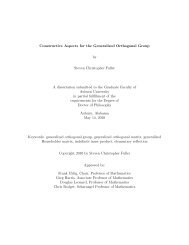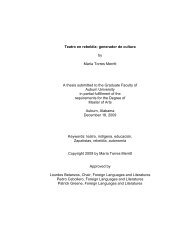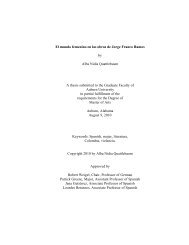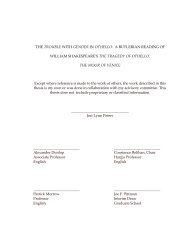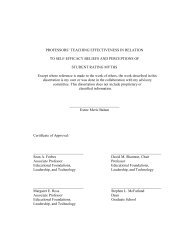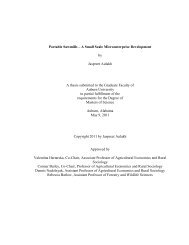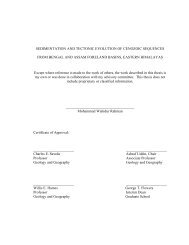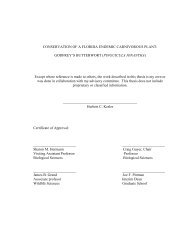Enhanced Polymer Passivation Layer for Wafer Level Chip Scale ...
Enhanced Polymer Passivation Layer for Wafer Level Chip Scale ...
Enhanced Polymer Passivation Layer for Wafer Level Chip Scale ...
Create successful ePaper yourself
Turn your PDF publications into a flip-book with our unique Google optimized e-Paper software.
Failure analysis techniques can be classified with non-destructive analysis and destructive<br />
analysis. The non-destructive evaluation will not damage the test sample and uses techniques<br />
such as X-ray inspection and C-mode scanning acoustic microscopy (C-SAM). In this research,<br />
destructive analysis was per<strong>for</strong>med to determine the solder bump failure mechanism. The test<br />
sample was cut from the test board, molded in room temperature cure epoxy resin, and carefully<br />
ground and polished to the desired cross sectional interface. The sample was inspected with a<br />
microscope periodically during polishing to ensure the proper polishing depth was achieved to<br />
reveal the desired cross section. After polishing the surface of the test sample smooth, a scanning<br />
electron microscope (SEM) was used to observe and evaluate the micro-structure. Figure 4.10<br />
shows the silicon cratering failure mode of the non-coated dies after thermal cycling test. Silicon<br />
cratering is a fracture within the silicon, typically manifesting under the bump. The fracture can<br />
be caused by the bumping/WLP process, the assembly process, or the excessive mechanical<br />
stresses on the bond pads during thermal cycling. There was no evidence of cratering is as-<br />
assembled WLCSPs.<br />
The failure mode <strong>for</strong> the SolderBrace coated WLCSPs was observed to be the thermal<br />
fatigue crack <strong>for</strong>mation and propagation in the solder near the pad surface on the package side of<br />
the joint as shown in Figure 4.11. This micrograph clearly shows failure occurred by thermal<br />
fatigue crack propagation. The solder bump surface did not de<strong>for</strong>m during thermal cycling.<br />
Finite element analysis was used to investigate the thermal stress induced inside both of<br />
the packages. Details are discussed in Chapter 5. The simulation results provide insight into<br />
the stress generation and provide guidance on appropriate design changes.<br />
90







